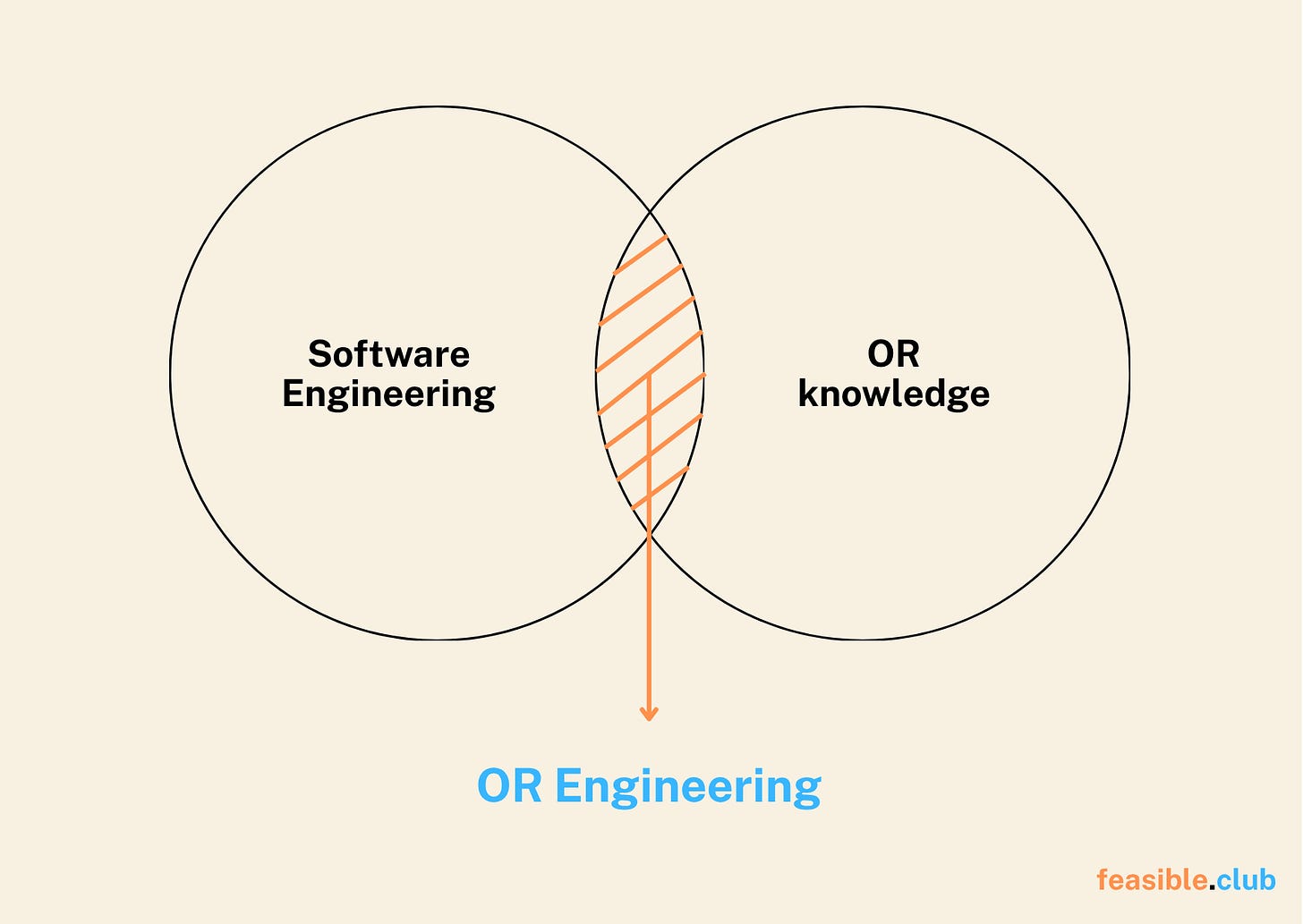📈 #91 Two surveys, one clear story: Operations Research is becoming essential
A look into the future: Stack Overflow and Gurobi reveal where OR is heading
Every year the tech world pauses for two big check-ins: developer surveys (like Stack Overflow’s) and industry reports (like Gurobi’s).
But if you’re an Operations Research engineer, they often feel like background noise. Why should you care?
Because they reveal not only where the industry is going, but also the blind spots.
Taken together, they show how OR sits at the crossroads of software engineering and decision science.
The future of your career depends on three signals you can’t ignore:
OR teams are growing while tech industry contracts.
Python dominance + real-time decision needs = new skill requirements.
The future belongs to OR engineers who can ship reliable production systems, not just build models.
That’s why today’s Feasible article will cover:
🎯 Why these surveys matter
📀 What the data reveals
🎓 What this means for your career
Are you ready? Let’s dive in… 🪂
🎯 Why these surveys matter
More than a decade ago, Stack Overflow did its first developer survey. Since then, it has grown from just a couple thousand respondents to dozens of thousands from more than 170 countries.
It shows where the broader tech ecosystem is heading in terms of tools, languages, and trends.
Gurobi, on the other hand, started its annual surveys back in 2022, and it’s a specialized view of optimization adoption and business priorities.
It reveals what’s actually happening in the OR industry.
They’re super relevant for our daily jobs, but neither tells the full picture: Stack Overflow underrepresents OR while Gurobi reflects its commercial solver ecosystem.
If you only focus on Stack Overflow’s survey, you might chase general dev trends that don’t apply to our niche as just a tiny fraction of respondents are optimization specialists.
But if you only focus on Gurobi you’ll see there’s nothing capturing the open-source ecosystem and that the entire survey focuses on Gurobi users and prospective users.
And our job as OR Engineers lies within that intersection:
So there’s a big value of reading both so you can cross-reference them to validate trends, identify disconnects between the more general dev world and the OR reality, and see where OR is ahead or behind broader tech adoption.
Having said all of this, let’s scrutinize them both!
(On top, if you follow me on LinkedIn you’d know I’ve been running some polls there. Nothing fancy, but they show where are we heading now.)
📀 What the data reveals
First thing to notice is: Stack Overflow1 received 49k+ responses while Gurobi2 received 473 (one of them, as you might guess correctly, is me).
Considering Gurobi is one of the most used (if not the most) and known solvers in the market, we could say that the number of total employees worldwide dedicated to Operations Research is around two orders of magnitude less compared to general development.
If we look beyond Stack Overflow and check sources like JetBrains’ Data Playground3, Shiftmag4, or Statista5, the global developer population sits somewhere between 20 and 47 million, with a previous projection of 28.7 million for 2024.
Let’s be conservative and call it 30 million.
That means Operations Research represents roughly 300,000 engineers worldwide.
I knew OR has always been a smaller world, but I didn’t see real numbers before.
So let’s look at the results.
📈 Confirming trends
There are some trends that go hand in hand. I’ve identified at least three of them:
🐍 Python’s absolute dominance.
As it’s the language for AI/data/backend, it’s jumped 7 percentage points in one year according to Stack Overflow. Gurobi says something similar as the vast majority of respondents (81%) prefer to program in Python. My survey goes in the same direction pointing at 87% of people using Python.
This isn’t just hype, it’s the reality across both general dev and OR-specific work.
🤖 The GenAI reality check.
84% of Stack Overflow’s respondents are using or planning to use AI tools but 46% actively distrust accuracy. As we can see in Gurobi’s survey, only 6% of OR practitioners are actually using it, with 24% experimenting with it.
GenAI is everywhere in the conversation, but as you can see just 30% of people are actually doing something with it. Still less adoption than in general development environments.
🔧 Collaboration tool preferences.
GitHub is more preferrable than Jira as Stack Overflow’s survey suggests. This is not directly measured in Gurobi’s, but 77% have small teams (2-5 people) requiring collaboration.
Model versioning through Git might be more valuable than issue tracking through Jira.
↔️ Revealing gaps
There are also some gaps or major differences between responses of one side and the other:
💼 Counter-cyclical hiring patterns.
We all know there are massive layoffs in the tech industry, but…
Keep reading with a 7-day free trial
Subscribe to Feasible to keep reading this post and get 7 days of free access to the full post archives.




